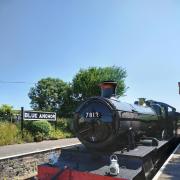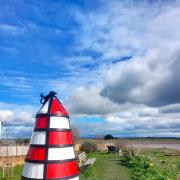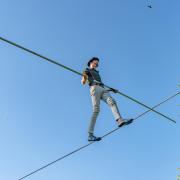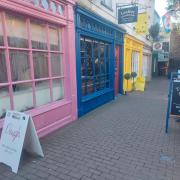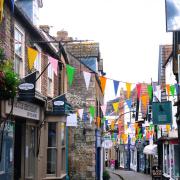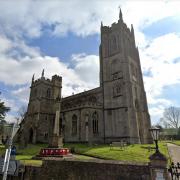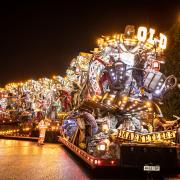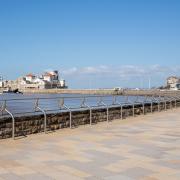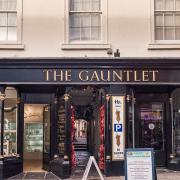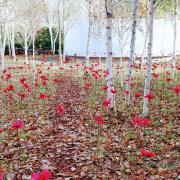Lowland heathland is a priority habitat that has been managed through time by grazing, cutting and burning. The use of fire is one of the oldest forms of land management and an important tool is controlled burning, locally known as swaling
Lowland heathland is a priority habitat that has been managed through time by grazing, cutting and burning. The use of fire is one of the oldest forms of land management and an important tool is controlled burning, locally known as swaling, writes AONB Ranger Andy Harris
In the Quantock Hills AONB, some of the earliest surviving monuments in the landscape are concerned with the funerary and ritual habits of Bronze Age people who used the hills more than 3,000 years ago. It is quite possible that the use of fire as a land management tool goes back to this period, or earlier. Certainly, more recently the use of fire during the winter months has been an important and traditional way of managing the heathland, and has crafted the landscape and its associated wildlife that are valued today.
However, by the 1980s, controlled burning, locally known as swaling, was not being regularly carried out, owing to concerns about insurance cover for hill graziers (the traditional practitioners) and a lack of agreement about how it should be done. Many areas of heathland had not been properly burnt for 20 years. Although not particularly rugged, the Quantock Hills are not very accessible to tractors and other machinery, so cutting the vegetation was not a practical alternative to fire, which is able to traverse the terrain with ease. All parties agreed that regular burning should be reinstated, and so a burning prescription was drawn up and adopted. Over the last 20 years this has been carried out by the Quantock Hills AONB Service on behalf of the commoners and landowners.
Controlled burning is used in wildlife conservation to create special habitats for rare species and creates a patchwork of different-aged heather which will support a wider range of animals and birds. These fires are undertaken in winter when it is least damaging to other plants and animals. Unplanned summer fires, on the other hand, are very damaging, not only to the heather but also to the soils, animals and birds. Reptiles, such as the adder, will be lying out in summer and can easily get caught in fast-moving fires. During the summer months the Quantock heathlands are a haven for breeding birds such as Dartford warblers, meadow pipits, whitethroats and nightjars and fire can destroy their nests. As summer fires tend to burn more fiercely this can lead to damage of the organic layers of the sensitive soils, such as peats which will inhibit vegetation growth and lead to erosion by wind and water.
Planning the burn
Before any swaling season can begin it is vital that all those with an interest agree the burning plan. Within the Quantock Hills AONB this includes relevant landowners, the Commoners Association and Natural England. Wider consultation also includes local wildlife groups and archaeologists. This plan is a condition of the current Countryside Stewardship Agreement, which sets a maximum burn size of 4 hectares, or 5� football pitches, on a 15-year rotation over an area of 750 hectares of burnable heath, some of which is bracken which we do not bother with.
Although not particularly rugged, the Quantock Hills are not very accessible to tractors and other machinery, so cutting the vegetation was not a practical alternative to fire, which is able to traverse the terrain with ease
Burning is a dangerous activity and the AONB Service has developed a lot of Health and Safety regulations to ensure there is no damage to people, property or the environment. A lot of training is given to staff and volunteers and detailed risk assessments are drawn up for each burn site. To minimise disruption, burning is very rarely carried out over weekends or bank holidays. The AONB Service has also invested in a lot of specialised equipment specifically to make burning safe and more effective.
The range of equipment utilised in fire management has evolved considerably over the last few years. In the early days burns were started with diesel-soaked rags on the end of a straightened coat-hanger! Today a much cleaner and safer method of using gas burners is altogether more efficient and effective.
The traditional method of controlling a burn is to use fire beaters. These are particularly useful for controlling the fire edge but can be hard and hot work if used to tackle a fire head on. The direct application of water has proved to be by far the most effective and safest method of controlling or extinguishing a fire. The ability to get water on site has dramatically increased confidence in controlling difficult and technical burns as well as dealing with fires should they cross a fire break or unexpectedly change direction or behaviour.
On the day
Once all the agreements, risk assessments and equipment are in place the fun bit can begin! However, it is important that you communicate with landowners and the Fire Service, informing them of where and for how long you intend to burn. The weather conditions (particularly wind direction) on the day usually dictate which of the planned burns will be undertaken. A thorough briefing and familiarisation with the site helps everyone to understand how things should go and what their individual roles are.
The traditional method of controlling a burn is to use fire beaters
It is worth remembering that although the fire may take only an hour or two to burn, the rest of the day will be taken up with preparing personnel and equipment, and with forecasting the behaviour of the fire. On a good day two burns (and very occasionally three) can be achieved. As you need just the right conditions there are only a few days in a season – October to March – when swaling can be undertaken. The rangers from the AONB Service and volunteers have to react to the good weather when it comes and this can lead to some very busy times, when they may not be in the office for long periods.
So when visiting the hills during in winter you may see the rangers and volunteers out swaling. However, if you see smoke at any time of year, and have any concerns, call the Fire and Rescue Service who will have been advised by Quantock Hills AONB of their swaling timetable and will be able to react accordingly. It is better to be safe than sorry: summer fires in particular are devastating for wildlife, especially reptiles and ground-nesting birds. Guarding this wonderful heritage is the responsibility of all who use it.
For more information visit ww.quantockhills.com



